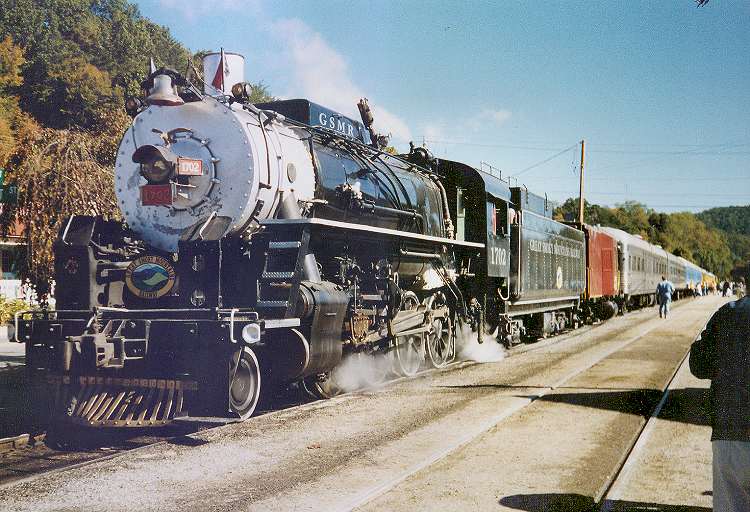During World War II the U.S. Army Transportation Corps conducted an extensive steam locomotive program in which several types of locomotives were built for use in countries liberated during the war. Among these were 2120 2-8-0s, later styled as class S-160 from a designation assigned by the American Locomotive Company. Included in this group was No. 1702, erected by Baldwin Locomotive Works in 1942. Intended for service overseas, she had the buffer blocks common on foreign engines. However, No. 1702 never left the United States and was eventually placed in service at Fort Eustis, Virginia (one source mentions Fort Benning, Georgia as a locale) where she remained until at least 1946. Information is conflicting regarding the subsequent history of the locomotive; she passed through several owners which sources identify as the Warren & Saline River Railroad, the Fremont and Elkhorn Valley Railway, and the Reader Railroad. The Great Smoky Mountains Railroad eventually acquired the locomotive for service on its North Carolina tourist operation; the GSMR web site states the acquisition occurred around 1996, though another source gives the year as 1991. No. 1702 appears here at Bryson City, North Carolina in a 1998 photo by Sharon Kruger.
Of several survivors of this Army "S-160" class, No. 1702 is the only one to keep its original number. However, over the years the engine has received several modifications in addition to replacement of buffers with standard North American couplers. As built, this class had a headlight at the top of the smokebox front, but No. 1702's headlight has been centered. Originally a coal burner, she has been converted to burn a mixture of heavy diesel fuel and recovered motor oil. She received a new tender, the original one being preserved at the Galveston Island Railroad Museum. The most far-reaching modification was made in 1997, when No. 1702 was fitted with Timken type AP roller bearings on all axles. However, this bearing design is intended for smaller freight car wheels and could not handle the lateral load created by a Consolidation type on a mountain railroad with extensive curvature. Also, the bearings were of a sealed design that could not be serviced properly by flushing out; as a result they suffered premature failure. In 2003 No. 1702's driving axles were refitted with conventional friction bearings. The locomotive was out of operation for several years, but returned to service in 2016.
